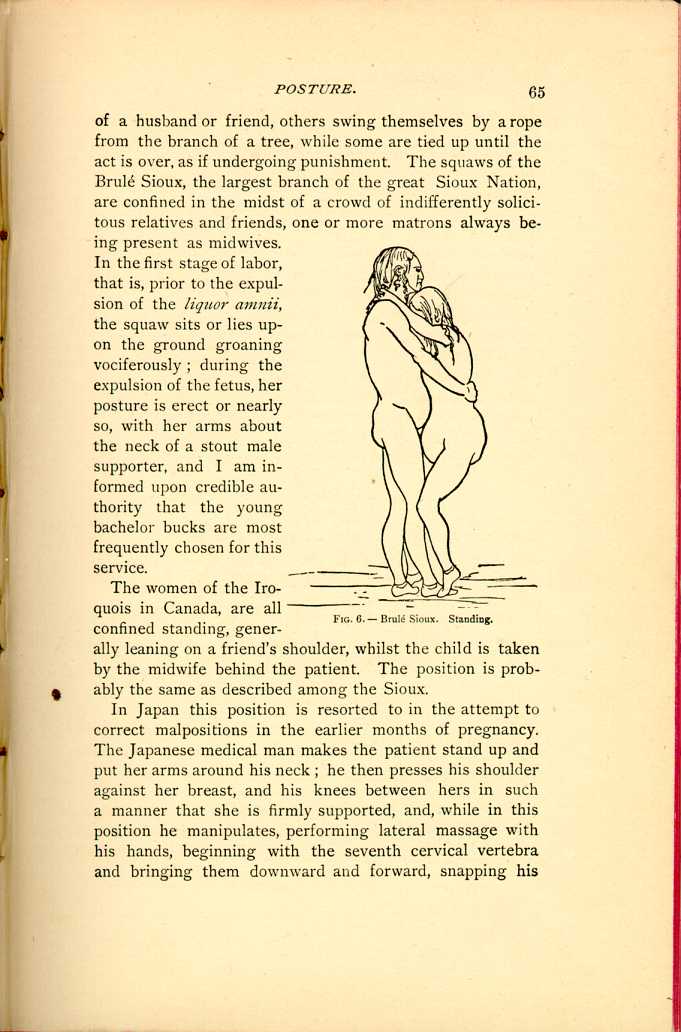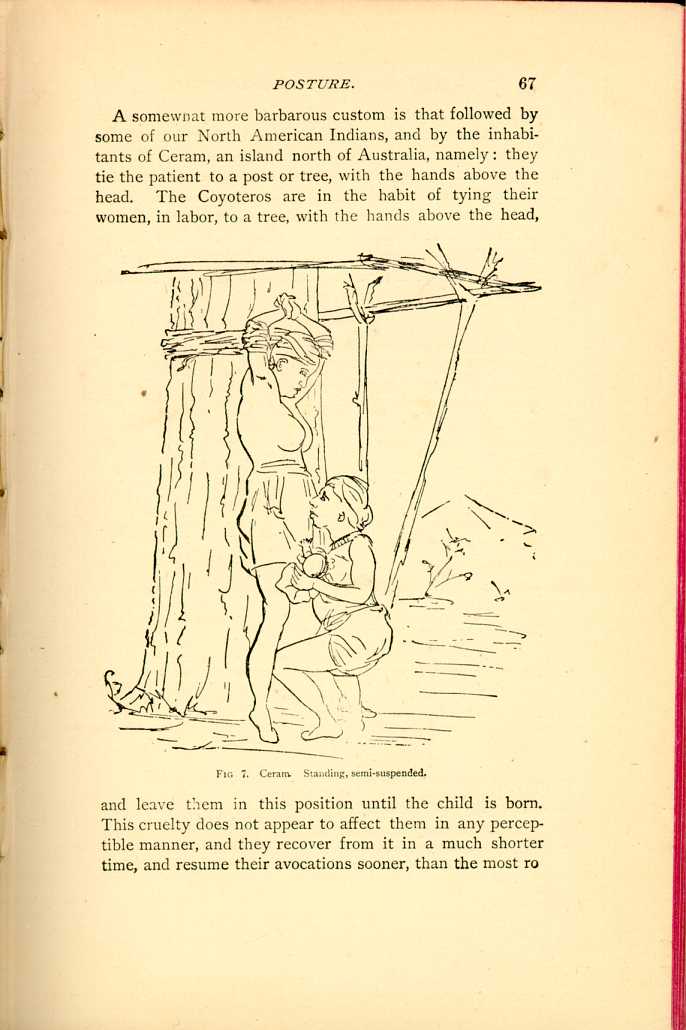| CHAPTER II.
POSTURE IN LABOR. Labor Among Primitive Peoples | ||
2. PARTIALLY SUSPENDED.
Parturient women endeavor to assume this position of partial suspension in various ways. Some hang to the neck
The women of the Iroquois
in Canada, are all

FIG. 6.—Brulé Sioux. Standing.
[Description: Pregnant woman stands, supported by a man. She faces him with
her arms around his neck. Black and white illustration.]
In Japan this position is resorted to in the attempt to correct malpositions in the earlier months of pregnancy. The Japanese medical man makes the patient stand up and put her arms around his neck; he then presses his shoulder against her breast, and his knees between hers in such a manner that she is firmly supported, and, while in this position he manipulates, performing lateral massage with his hands, beginning with the seventh cervical vertebra and bringing them downward and forward, snapping his
The "New York Medical Record'' adds, that the accoucheurs are, in Japan, as a rule, advanced in age. If this custom is found in our own country it certainly comes to us from some of the inland countries of Europe. Thus, Spence, in his "System of Midwifery,''[14] says that the position which is very frequently practiced in the northern portion of Scotland, is that of hanging about the neck of a person as tall, or, if possible, taller than herself, who gently supports the patient's back, and with her knees fixes the knees of the woman in labor. In Italy it was Savonarola, who died in Padua in 1460, who taught that in difficult labors the parturient woman should either hang to the neck of a stout person or assume the knee-elbow position.[15]
The practice in some Mexican families[16] is to keep the woman in an upright position, with the knees and thighs slightly flexed, the feet wide apart, while she supports herself by two ropes suspended from above. He adds that massage is very freely resorted to, but no binder is at any time used.
We find precisely the same position in Africa among several native tribes. Thus, the Somali women assume an erect posture, partially suspended by a rope during the expulsion of the child, which is received by a family attendant or midwife.[17] So, also, we find that the women of Dar Fur, on the Nile, are delivered standing, with the legs separated,[18] holding on to a rope.
A somewhat more barbarous custom is that followed by
some of our North American Indians, and by the inhabitants
of Ceram, an island north of Australia, namely: they
tie the patient to a post or tree, with the hands above the
head. The Coyoteros are in the habit of tying their
women, in labor, to a tree, with the hands above the head,

FIG 7. Ceram. Standing, semi-suspended.
[Description: Woman gives birth leaning against a tree, her arms bound above
her. Another woman squats before her to assist delivery. Black and
white illustration.]
| CHAPTER II.
POSTURE IN LABOR. Labor Among Primitive Peoples | ||